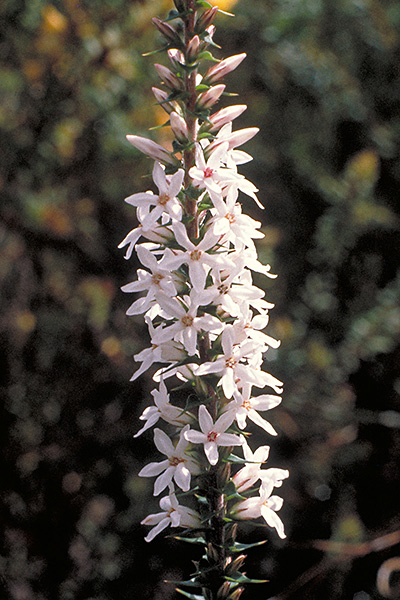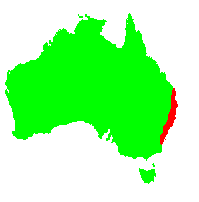General Description:
The plant family Ericaceae (heaths and heathers) is widespread in many parts of the globe, particularly Europe and South Africa. It contains a number of widely cultivated plants such as Erica, Rhododendron and Pieris.
Like most of Australia’s members of the Ericaceae, Epacris belongs to the subfamily Epacridoideae, which was formerly classified as a separate family, the Epacridaceae. Epacris consists of about 40 species of mainly small shrubs. Most are endemic to Australia but a few species can be found in New Zealand and New Caledonia. They occur in a variety of habitats from alpine areas to coastal heaths.
Epacris pulchella is typically an erect shrub up to 100-150 cm high comprising several long branches. The leaves are small and more or less oval-shaped but tapering to a narrow point. They are about 5 mm long by 4 mm wide. The white flowers are tubular, up to 6 mm long and occur in a massed display along the branches from the leaf axils. They contain nectar and are frequented by honey-eating birds. Flowering occurs mainly in late winter and spring.
The species is well known in cultivation and is suited to temperate and sub-tropical areas. It prefers a well drained position in semi shade and should not be allowed to dry out. It is also a very attractive plant for a container.
Propagation of E.pulchella is usually by cuttings of firm current season’s growth. Like most epacrids, the roots are very fine and easily damaged during transplanting. Cuttings are probably best placed into individual small pots or tubes to minimise root disturbance. The species can be grown from seed but this is not readily available.

Epacris pulchella
Photo: Brian Walters
 Australian Native Plants Society (Australia)
Australian Native Plants Society (Australia)













